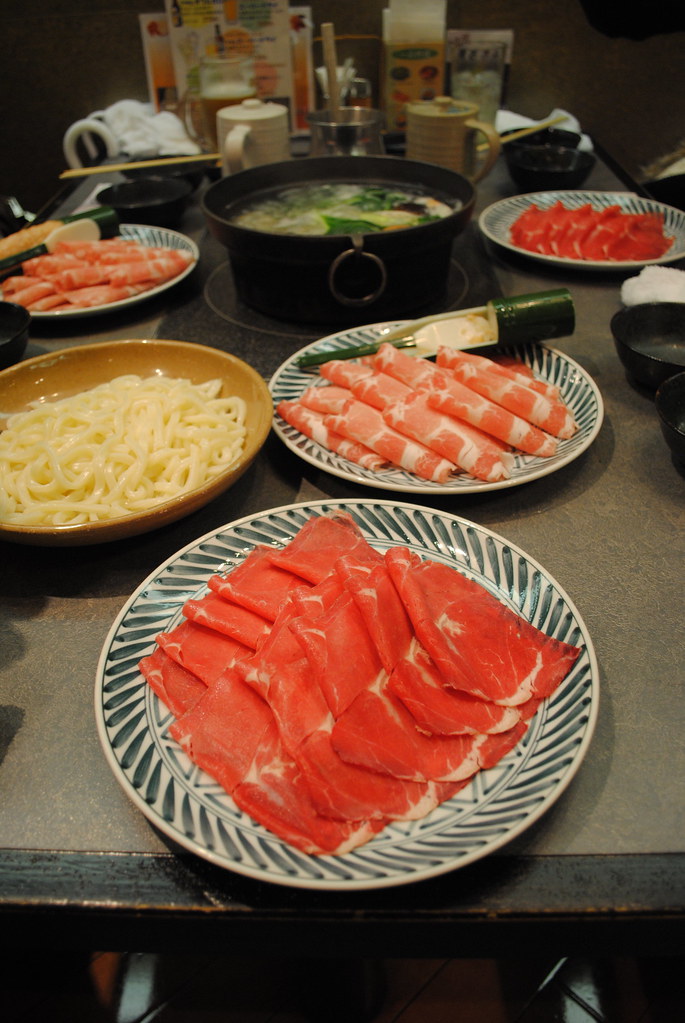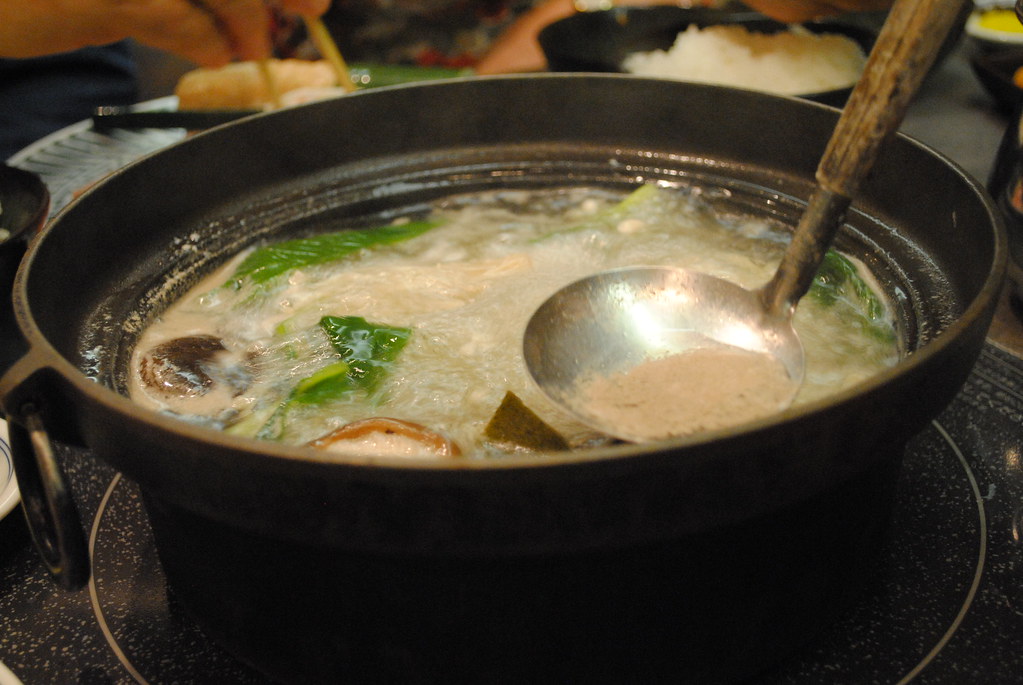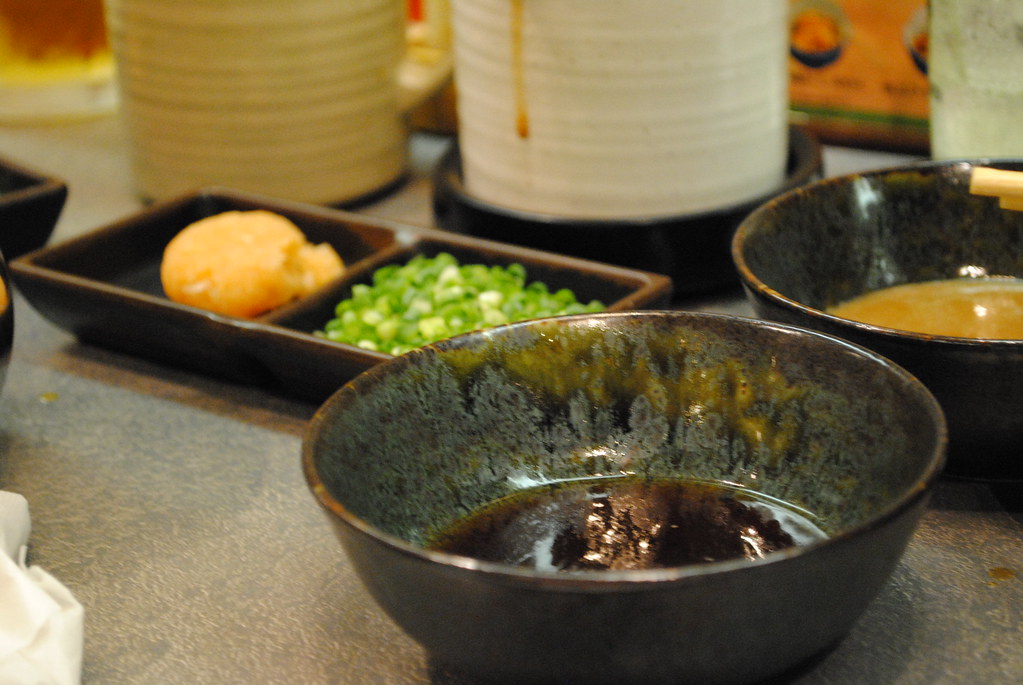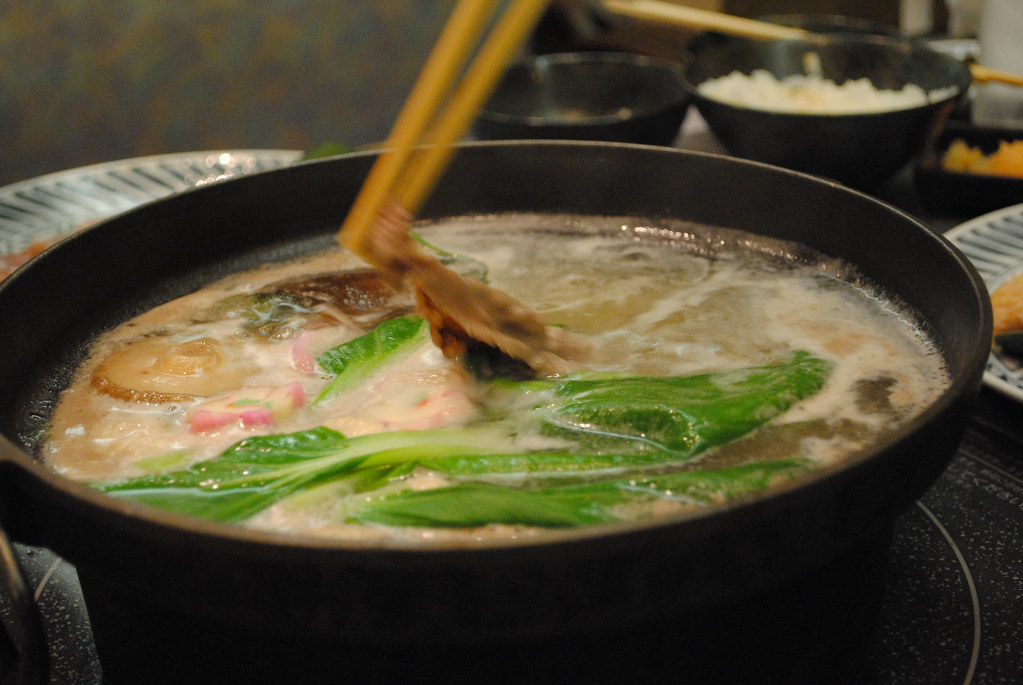Japanese homes are generally not very nice places to be during the chilly nights of 秋 (あき - aki - Autumn) and 冬 (ふゆ - fuyu - Winter). Apartments in particular tend to have single-glazed windows and no roof space for insulation which means that most people rely on small heaters, air conditioners and 炬燵 (こたつ - kotatsu - tables with built in heaters) to ward off the cold. The last thing you want to do when you've got the room nice and warm is go and stand on the cold kitchen floor chopping vegetables, so why not just bring everything to the table? 鍋物 (literally "pot things") is the result - a one-pot meal that brings the whole family together (preferably where it's warm). It's branched out into a variety of different styles and is now enjoyed internationally throughout the year; I'll bet you've heard of some versions of it yourself.
At its base, 鍋物 is similar to a Chinese steamboat. A pot of stock is heated up to a rolling boil at the table and a variety of ingredients are thrown in, cooked up and enjoyed communally; everyone just helps themselves directly from the pot. The three things that separate one form of 鍋物 from another are the stock, the sauces (or lack thereof) and the ingredients themselves. There are several regional variations with subtle differences, but perhaps the best known versions are:
すき焼き (sukiyaki), a sweet stock served with a mixture of beef and vegetables
ちゃんこ鍋 (chankonabe), a very meat and protein-heavy favourite of 相撲 (すもう - Sumo) wrestlers trying to bulk up for matches and
しゃぶしゃぶ (shabu shabu), a savoury hot pot with a salty broth and a bit of everything.
In the case of しゃぶしゃぶ, the stock is made with a large slab of 昆布 (こんぶ - konbu - kelp) which is boiled in the water, creating a rich, salty broth; the word しゃぶしゃぶ is actually 擬音語 (ぎおんご - giongo - onomatopoeia) for the sound of the kelp being swished around in the water. すき焼き features a much darker, sweeter broth - it's made using a combination of 砂糖 (さとう - satou - sugar), 醤油 (しょうゆ - shouyu - soy sauce) and みりん (mirin). ちゃんこ鍋 is made with chicken stock, sharing the savoury taste of しゃぶしゃぶ. Despite these differences, the broth needs to be watched carefully no matter what kind of 鍋物 you're eating; as the meat and vegetables cook, meat juice and other debris rises to the surface which needs to be skimmed off as you can see above. This is most easily achieved with a mesh skimmer, which is definitely a worthwhile investment if you plan to do a lot of this!
The next consideration is the condiments and sauces that are provided. しゃぶしゃぶ is usually served with ゴマ (goma - sesame) and ポン酢 (ぽんず - ponzu - a mixture citrus and soy sauce) dipping sauces, which go well with the うまみ (umami - meaty, savoury taste) of the ingredients. すき焼き is served with raw egg, which is beaten in a bowl and used as a dip for the hot ingredients before they're eaten; not everyone is comfortable with doing this, so it's good that the stock provides enough flavour on its own! Finally, ちゃんこ鍋 is served by itself, usually with some of the stock. Due to the amount of meat cooked throughout the meal, it becomes very rich and is often used as a soup base in a bowl of noodles to finish.
As far as ingredients go, 豆腐 (とうふ - tofu), うどん (udon) or rice noodles and しいたけ (shiitake) are familiar faces in most pots, as are bok choy and other big green leafy vegetables. Much like 焼肉 (やきにく - yakiniku - Japanese BBQ), the meat in しゃぶしゃぶ and すき焼き is sliced very thinly and cooks in moments, so it's a good idea to put all your vegetables in first. In a lot of cases, swirling the meat around the pot for a few seconds is enough to cook it, but ちゃんこ鍋 can be a bit different; it often contains large, slow-cooking pieces of chicken and meatballs made from chicken mince. You may be noticing an ongoing poultry pattern here - it's apparently because chickens are a good luck symbol in 相撲. The reasoning is that a good wrestler should always try to stay on two feet like a chicken, rather than four to the floor like a cow or laid flat like a fish. The other two have no such reservations, particularly しゃぶしゃぶ - pork, beef, chicken and shellfish are all fair game.
Whether you've just popped a portable gas stove on the dinner table or gone out to a しゃぶしゃぶ restaurant with all the trimmings, you'll have to agree that 鍋物 is one of the cheeriest ways you can cook and eat. Everything is there from the start and everyone is involved throughout the process - it's hard not to chat to everyone while the pot is bubbling away and you're planning your next addition. The other bonus is that unlike a lot of Winter fare, it's actually very healthy - everything is boiled and there are plenty of vegetables in there, so provided you don't eat 相撲-sized servings, you'll probably make it to Spring without winning the championship. Pop the heater on and give mum the night off - she might even appreciate it enough to let you have that last piece of chicken.





No comments:
Post a Comment
If you have any questions or additions, I would love to hear from you. I may not know the answer, but I'll do my best to find out in any case! You can post anonymously if you like, but abusive/unintelligible/inappropriate comments will not be published.